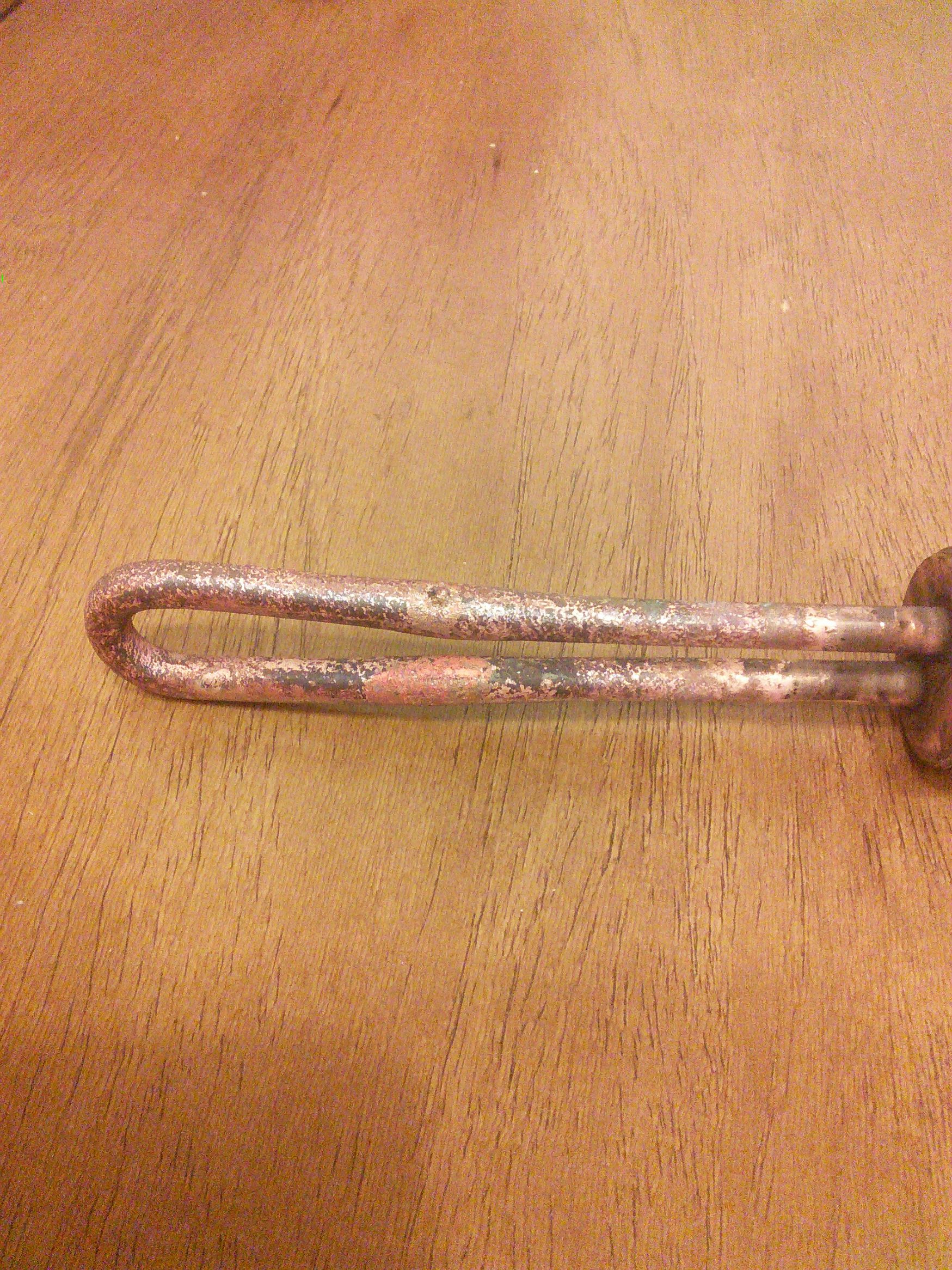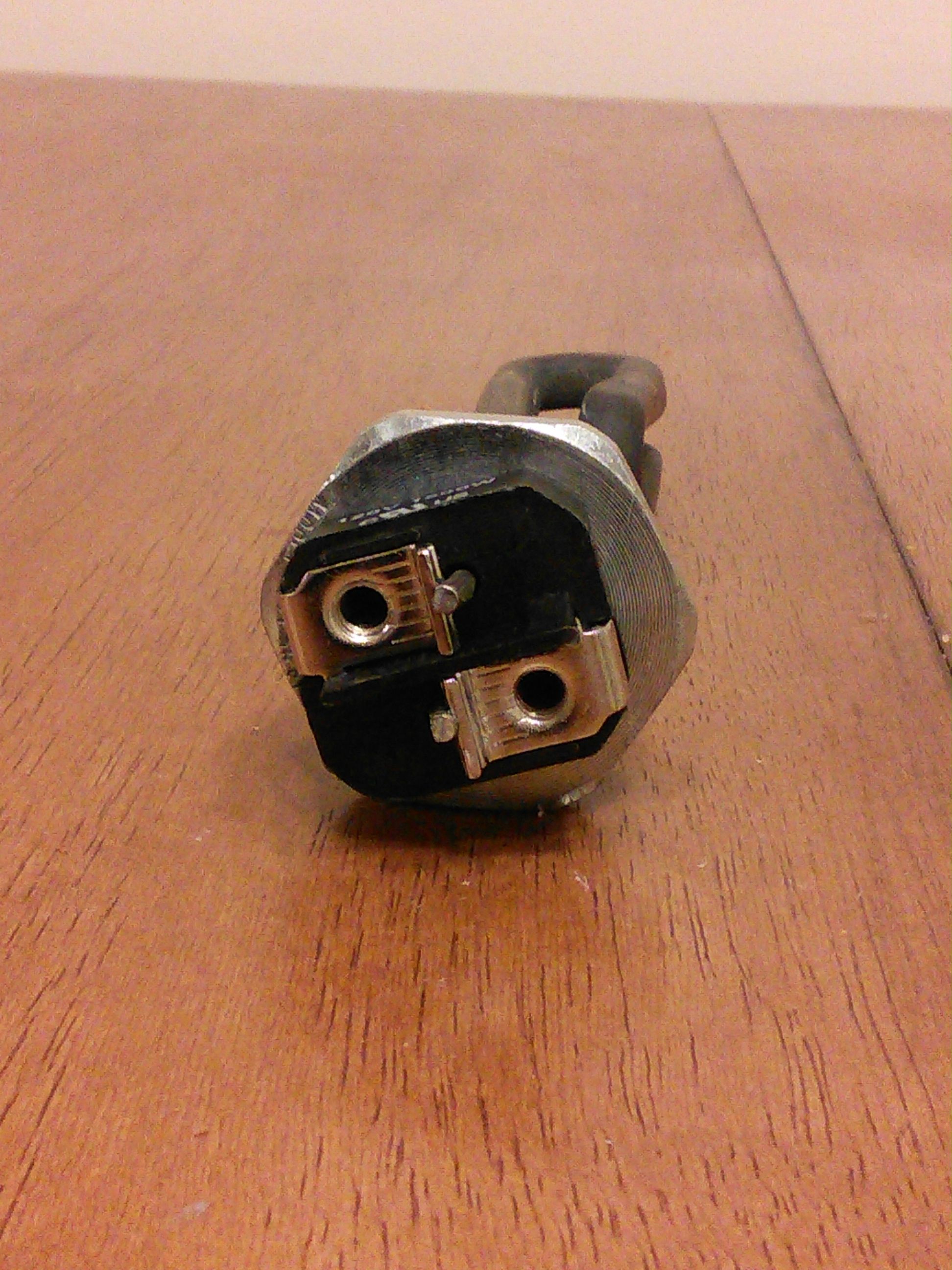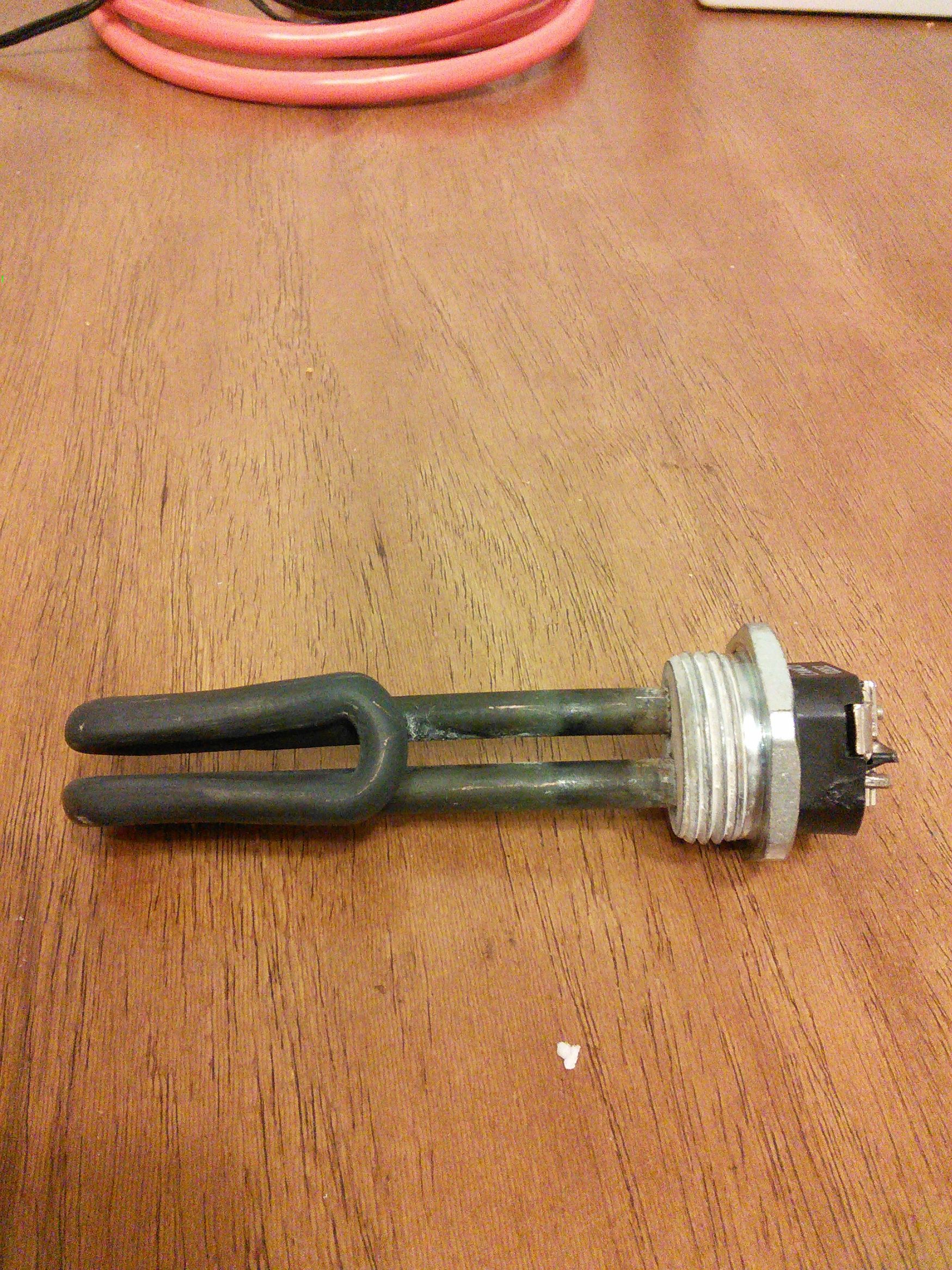hannibalmdq
Well-Known Member
Hey everyone. So tonight was my first test with a recirculating eBIAB system. It's a 120V setup with a 1500W element. During the mash, the element kicked on and my GFCI tripped.
I scratched my head, shut everything down, fired it back up, and it tripped again (in retrospect, maybe not the best idea). My kettle is actually induction capable, so I just let the mash finish and moved the pot onto my old induction top to boil and finish up.
After the brew I pulled out my multimeter and tested the continuity of the pot to ground. Then I checked the continuity of the element leads to ground. Complete circuits everywhere. I dissembled everything to see what happened. Here's what I found.

It almost looks like something inside the element burst through the element housing wall. The whole thing lost isolation and went hot. So here are my questions.
1) What happened here? Did the element just fail catastrophically? Has anyone seen this type of thing before? This was my first test with a pump and whatnot, but I don't really think I did anything differently. I've done at least 12 brews with the kettle, all of which were pretty uneventful except one instance of mild scorching.
2) Shouldn't the breaker have tripped and not the GFCI? I've read that a huge pull of current can fool them into tripping, but there wasn't a leak, just a short. Or am I misunderstanding something about GFCIs? At any rate, I'm glad one of the safety systems stepped in.
3) Should I worry about the beer? Is there anything to fear from the damaged housing floating in my beer?
Anyway, I'm no worse for the wear and super glad that the pot was grounded and I was running with the standard protections in place . Be careful out there, everyone. Brew on.
I scratched my head, shut everything down, fired it back up, and it tripped again (in retrospect, maybe not the best idea). My kettle is actually induction capable, so I just let the mash finish and moved the pot onto my old induction top to boil and finish up.
After the brew I pulled out my multimeter and tested the continuity of the pot to ground. Then I checked the continuity of the element leads to ground. Complete circuits everywhere. I dissembled everything to see what happened. Here's what I found.

It almost looks like something inside the element burst through the element housing wall. The whole thing lost isolation and went hot. So here are my questions.
1) What happened here? Did the element just fail catastrophically? Has anyone seen this type of thing before? This was my first test with a pump and whatnot, but I don't really think I did anything differently. I've done at least 12 brews with the kettle, all of which were pretty uneventful except one instance of mild scorching.
2) Shouldn't the breaker have tripped and not the GFCI? I've read that a huge pull of current can fool them into tripping, but there wasn't a leak, just a short. Or am I misunderstanding something about GFCIs? At any rate, I'm glad one of the safety systems stepped in.
3) Should I worry about the beer? Is there anything to fear from the damaged housing floating in my beer?
Anyway, I'm no worse for the wear and super glad that the pot was grounded and I was running with the standard protections in place . Be careful out there, everyone. Brew on.





